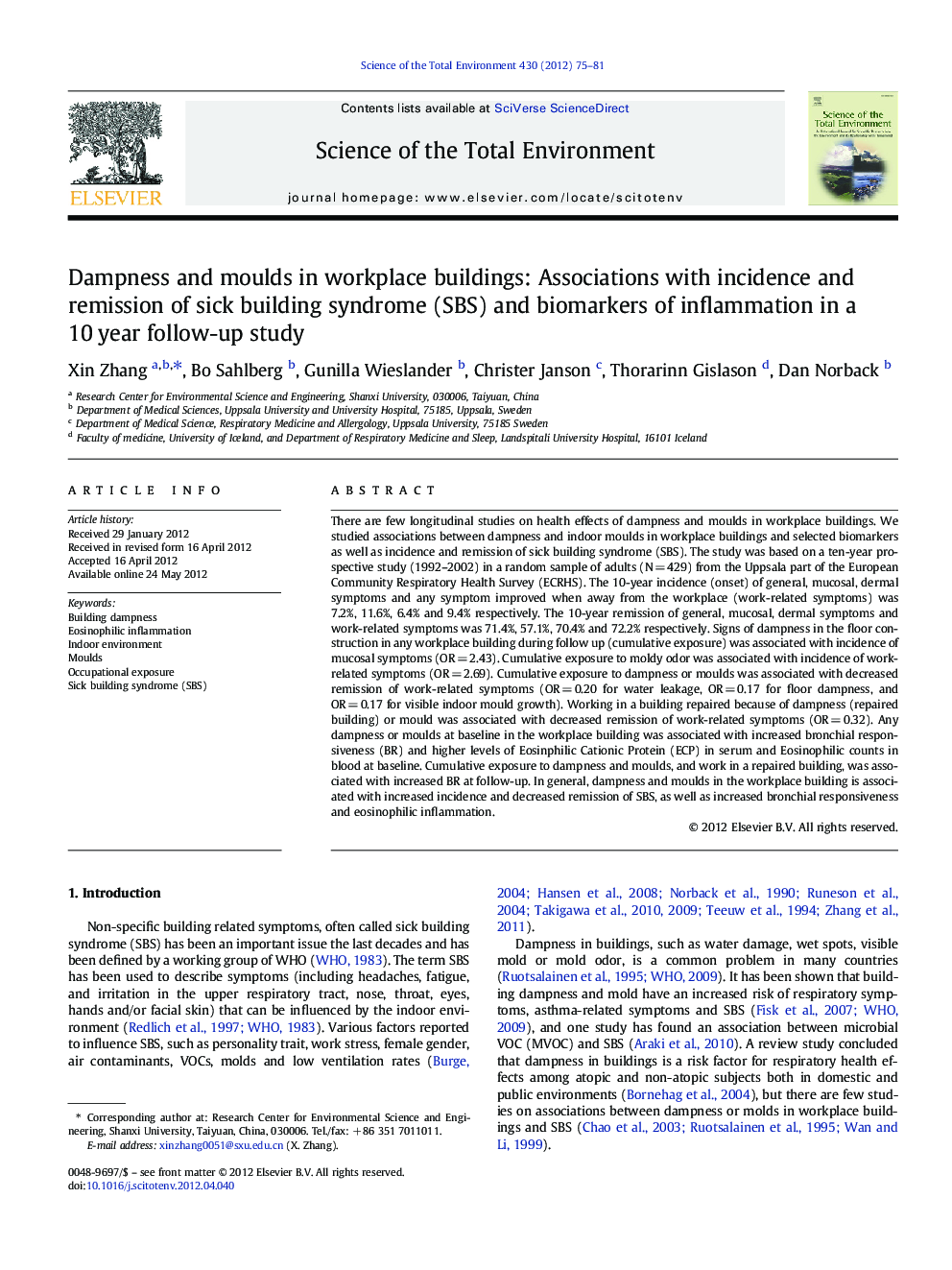| کد مقاله | کد نشریه | سال انتشار | مقاله انگلیسی | نسخه تمام متن |
|---|---|---|---|---|
| 4429331 | 1619822 | 2012 | 7 صفحه PDF | دانلود رایگان |

There are few longitudinal studies on health effects of dampness and moulds in workplace buildings. We studied associations between dampness and indoor moulds in workplace buildings and selected biomarkers as well as incidence and remission of sick building syndrome (SBS). The study was based on a ten-year prospective study (1992–2002) in a random sample of adults (N = 429) from the Uppsala part of the European Community Respiratory Health Survey (ECRHS). The 10-year incidence (onset) of general, mucosal, dermal symptoms and any symptom improved when away from the workplace (work-related symptoms) was 7.2%, 11.6%, 6.4% and 9.4% respectively. The 10-year remission of general, mucosal, dermal symptoms and work-related symptoms was 71.4%, 57.1%, 70.4% and 72.2% respectively. Signs of dampness in the floor construction in any workplace building during follow up (cumulative exposure) was associated with incidence of mucosal symptoms (OR = 2.43). Cumulative exposure to moldy odor was associated with incidence of work-related symptoms (OR = 2.69). Cumulative exposure to dampness or moulds was associated with decreased remission of work-related symptoms (OR = 0.20 for water leakage, OR = 0.17 for floor dampness, and OR = 0.17 for visible indoor mould growth). Working in a building repaired because of dampness (repaired building) or mould was associated with decreased remission of work-related symptoms (OR = 0.32). Any dampness or moulds at baseline in the workplace building was associated with increased bronchial responsiveness (BR) and higher levels of Eosinphilic Cationic Protein (ECP) in serum and Eosinophilic counts in blood at baseline. Cumulative exposure to dampness and moulds, and work in a repaired building, was associated with increased BR at follow-up. In general, dampness and moulds in the workplace building is associated with increased incidence and decreased remission of SBS, as well as increased bronchial responsiveness and eosinophilic inflammation.
► We studied associations between dampness in workplace buildings and biomarkers as well as SBS.
► Dampness is associated with increased incidence and decreased remission of SBS.
► Dampness and moulds increased bronchial responsiveness and eosinophilic inflammation.
Journal: Science of The Total Environment - Volume 430, 15 July 2012, Pages 75–81